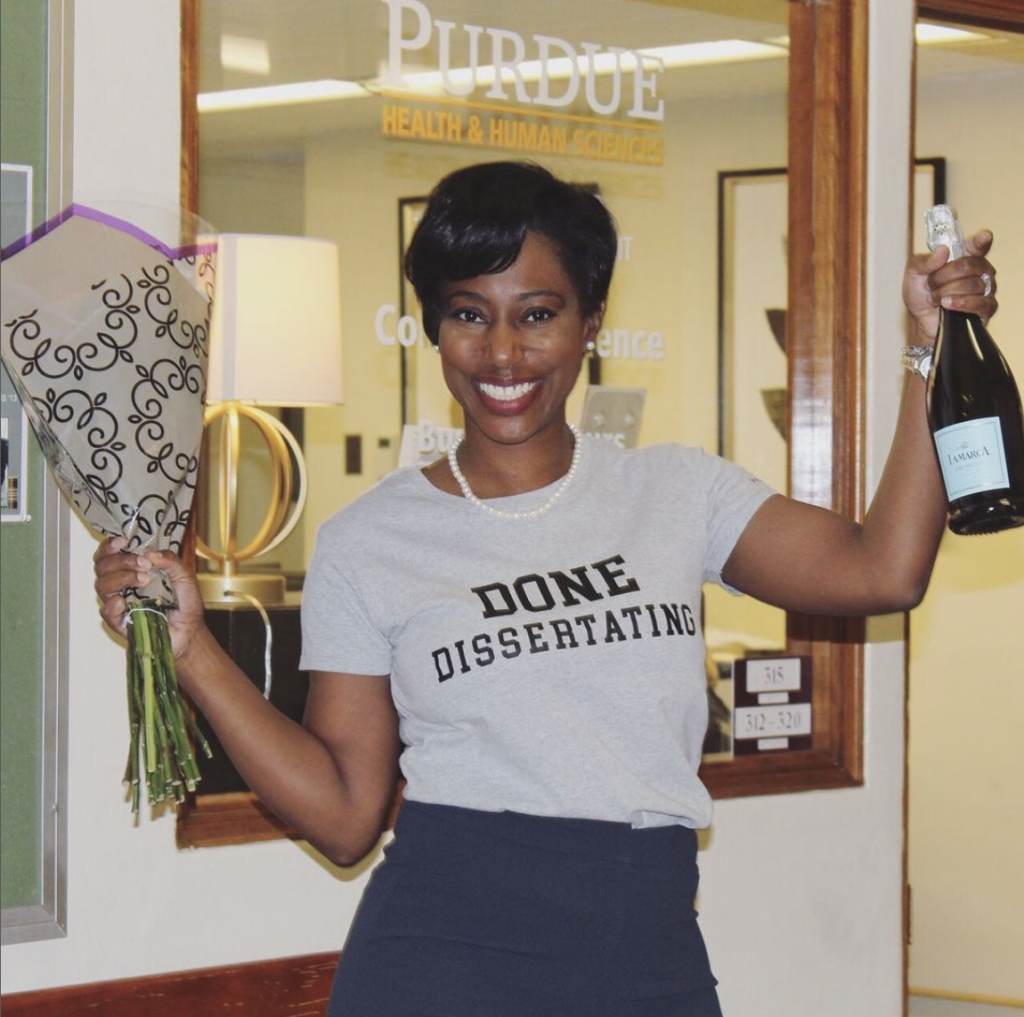For years, Tanisha Watkins, Ph.D. harbored shamed and guilt about her student loan debt. Then she found a Facebook group with others just like her.
“I was ashamed about my debt,” Watkins told 21Ninety. “I’m in a Facebook group that talks about student loan forgiveness. Seeing other people’s numbers made me realize ‘WOAH!’ Being part of this group has put in perspective that a 6-figure student loan debt is a lot, but there are people who have more. It put things in a bigger perspective.”
Watkins has a student loan debt of more than $100,000. She has a three degrees including her Ph.D.
“A bulk of my student loan debt did come from my master’s program,” she explained. “I chose to attend private schools for both my undergraduate and graduate school, but I have no regrets for the experience,” Watkins explained.
Watkins graduated from the University of Miami in 2004 with a degree in Broadcast Journalism and received her master’s in strategic communication from High Point University. She completed her Ph.D. from Purdue University, a degree she obtained tuition free. Currently, Watkins works full-time as a Consumer Researcher and part-time professor.
“People live to pay the debt. They have all of this student loan debt and get a job to handle that looming debt,” she said.

Black Women Burdened by Student Loans
Black women are uniquely burdened by student loan debt. A recent study shed light on the alarming student loan debt crisis faced by Black women in the United States. According to The Motley Fool, Black women carry a higher student loan debt burden than other demographic groups. Black women also face significant challenges in repaying these loans. On average, Black women have about $41,466 in undergraduate student loan debt one year after graduation. As expected, attending graduate school only increases this debt among racial groups. The American Association of University Women details that “white women are estimated to owe $56,098, on average, while Black women owe closer to $75,085.” This growing issue highlights the urgent need for targeted solutions to address the systemic barriers contributing to this disparity.
Solving the student loan debt crisis for Black women requires a unique approach that addresses both the root causes and immediate challenges. It would also require policymakers to prioritize efforts to reduce disparities in educational opportunities, provide increased financial aid, and enhance support systems for marginalized communities. Furthermore, implementing targeted loan forgiveness programs and income-driven repayment plans can alleviate the burden of debt repayment for those facing financial hardships.
Tackling Student Loan Debt
Creating a way to pay off student loans is challenging, especially when it is a 6-figure amount. There are targeted loan forgiveness programs and income-driven repayment plans, but sometimes that can feel like just scratching the surface of your debt.
“I have a plan to pay it back, but do I want to? No,” Watkins joked. “Because when you look at it from a racial and systemic standpoint, it makes you look at how black students are being taught about financial education and financial equality. The government doesn’t teach financial literacy, and they should.”
One way Watkins tackles this issue was by teaching her 17-year-old son about financial literacy.
“I explain to him how your grades impact you and the possibility of scholarships,” she explains.
Watkin’s adopted a unique approach to dealing with her student loan debt.
“I look at my student loan payment as a mortgage, and my husband and I are pretty smart financially. And we are on track to pay off our mortgage in 8 years, and that’s how I apply it to my student loans. I paid more than required. Do I feel good about paying this debt? No, but I have a plan that requires me to be disciplined. It feels good to see that number go down.”
‘Take Full Advantage of Your School’
Watkins wants first-time payers to understand that it is crucial not to ignore student loan debt.
“I know it’s a popular path to go down, but don’t ignore it. Just break it down into yearly goals. Don’t think about it as a chunk you have to pay back. And celebrate it when you do make a payment,” she said.
Another piece of advice Watkins has for students is to take advantage of the time they have in school.
“People don’t take full advantage of the school resources and you need too,” Wakins advised. “It doesn’t go back to the staff or faculty, so you have too.”
